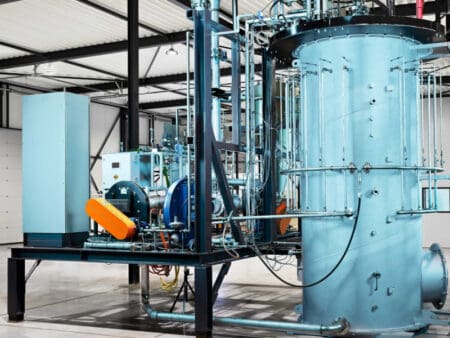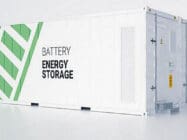
Lithium-sulphur batteries with enhanced performance, iron as a fuel for use on Earth and on the Moon and Greenland rock flour as a potential carbon capture medium are on this week’s technology radar.
Li-S batteries vs Li-ion
Australian battery technology company Li-S Energy has announced the development of its first 20-layer battery cells utilising third-generation semi-solid state lithium sulphur battery technology.
Key benefits of the technology the company highlights include a 45% improvement in volumetric energy density reaching 540Wh/l, a higher gravimetric energy density of over 400Wh/kg and enhanced safety with the use of a low flammability electrolyte.
This performance is nearly double the gravimetric energy density and a comparable volumetric energy density compared to current lithium-ion cells, the company states. Thus, in practical terms, this means Li-S battery cells are now the same size as existing Li-ion batteries but half the weight.
Have you read?
Battery Passport content guidance proposals for Europe
Decarbonising industry – the good, bad and ugly
Li-S envisages that its new Gen3 cells, which take advantage of the company’s patented boron nitride nanotubes and Li-nanomesh within the cell construction, will be of particular interest for use in drones and other e-aviation applications – a market in which the company already is established and has estimated will exceed $32 billion per year by 2035.
Iron in the fire – and on the Moon?
In forest fires, it is well known that fire can jump from one tree to the next when the temperature is hot enough for combustion – a phenomenon known as discrete burning that otherwise rarely occurs naturally on Earth.
In order to understand the process in more detail scientists have been investigating the burning of iron dust in the zero gravity environment of space, where the iron particles are able to float and ignite discreetly.
From the use of high-speed imaging capturing the phenomenon, they have produced models showing the ideal conditions to burn the fuel on Earth – and from this, it has been possible to build practical iron-burning furnaces.
The advantage of burning iron is down to chemistry. Essentially, burning fuel is the process of transforming a material by adding oxygen atoms and with iron, the leftover product after combustion is iron oxide, or rust. That can easily be collected and processed to remove the oxygen and return it as iron. Thus, by using electricity from sustainable sources, iron could become a circular, endlessly recyclable fuel.
A demonstration plant using iron as its fuel source is up and running in Budel, near Eindhoven in The Netherlands, by the Dutch startup Metalot, that can produce 1MW of steam in a unit that stands in a warehouse.
Scaled up such an iron power plant could produce much more energy but the technology also could hold potential for use on the Moon, the European Space Agency has suggested. Using solar energy, aluminium and silicon powders can be produced from lunar minerals, and hydrogen and oxygen can be harnessed from lunar ice.
The hydrogen can then be used to convert lunar dust that is high in iron and titanium to produce water and iron powder. The metallic powders and oxygen from the water ice can be used as propellants for rockets or ground transportation and the water by-product could even be used as drinking water.
Greenland rock flour for carbon capture
The application of ground silicate minerals to agricultural soils has been proposed as a method for taking up CO2 by enhancing the weathering rate of these minerals through their exposure to soil acids.
But a new study by Danish researchers suggests that glacial rock flour, a finely grained material formed from rock ground in the glacial erosion process, may be a cheaper and more practical alternative as it is abundantly available and avoids the need for energy intensive grinding.
Like the ground silicate minerals, glacial rock flour has previously been shown to improve agricultural yields in weathered and nutrient-deficient soils. However, the Danish researchers have found that it is also effective for sequestering CO2.
Using glacial rock flour from Greenland, the researchers found that applied with an application to an acidic, sandy soil in Denmark, over a three-year period the estimated CO2 uptake was of a similar order of magnitude to earlier estimates for ground basalt.
The researchers note that their estimate does not take into account emissions due to extraction, transportation and application and these would need to be thoroughly accounted for to ensure the uptake due to weathering outweighs them, although with transportation being progressively decarbonised, those are likely to become less of a factor.
Approximately 1 billion tonnes of glacial rock flour are deposited annually on Greenland. For the researchers, the main issue that still requires further research is the need to ‘ground truth’ their protocol for calculating the CO2 uptake.








